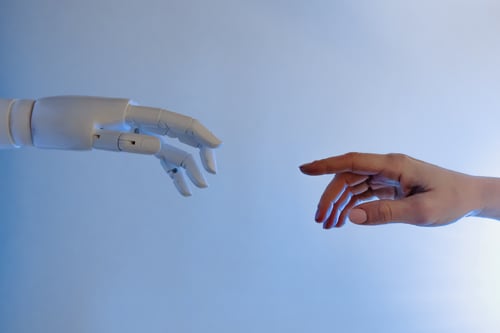Many companies are interested in integrating artificial intelligence (AI) into their user experience, but most are baffled at how to give an organic introduction.
At the Data Science Salon Conference on Applying AI and ML in Marketing and Digital Advertising, we heard an in-depth take from Archi Mitra at Buzzfeed on how his team created an applicable AI tool while also keeping brand presence and content top of mind.
Artificial intelligence (AI) vs. machine learning (ML)
Machine learning has limited capacity, while AI works to create an intelligent system that can perform various complex tasks. Machine learning is essentially the groundwork to create machines to perform only those specific tasks they are trained for. AI systems are concerned about maximizing the chances of success for what the programmer is trying to achieve.
Creating an on-brand AI experience
Ideally, the perfect combination of AI in any client or vendor-facing tool is to have it support the existing functions of a product. An example would be integrating an AI writing assistant into email marketing. Creativity and efficiency work hand in hand in order to bring the best possible outcome to a project.
Buzzfeed began experimenting with AI in April of 2023 with their infinity quizzes—which create personalized quizzes based on one's personality.
Buzzfeed already has the reputation of producing highly shareable and often viral quizzes based on relatable pop culture themes (i.e., which Game of Thrones character are you). They took it a step further in May of this year when they introduced Botatouille in their Tasty iOS app. Tasty is Buzzfeed’s culinary arm packed with convenient and popular recipes.
Think of Botatouille as the official Tasty sous chef of your phone. Users can still search for recipes, and now with the help of AI can get hands-on recommendations, grocery lists, and quick meals based on the specific ingredients available in a user's fridge. It even acts as a quick answer tool for questions like— “What temperature should I roast potatoes at?” This is an incredible combination of AI and creativity specifically designed for the Tasty user. Familiar to the user of the site while also elevating the customer experience.

Empowering and educating your team
So, how did Buzzfeed go about doing this? AI is a multifaceted beast of trial and error which is often intimidating. According to Archi, the steps included a three-pronged plan with a human and tech alignment.
It began with "democratizing the technology," as he put it, and left it in the hands of the creatives. Buzzfeed is a brand known for its creativity and for empowering its teams (literally every team at Buzzfeed) to use AI technology, giving them a good ground zero for use. Each team had access to the tool with measuring API (including token use, analytics, etc.).
From there, they held “AI office hours” to educate their team about generative AI and its impact, use, and implementation prospects. Since it can be a very technical and high pressure-for-success process, the Buzzfeed team leads with a knowledge-first approach. Understanding the technology and its capabilities created an open dialogue on how best to use it, leading to the third and final prong—build to implement.
After taking the time to understand the capabilities and where it best-made sense to introduce the AI bot, the application began. Building your own AI is a slippery slope because one "can't control it," as Archi plainly stated. The technology itself is based on a series of guidelines that the AI can be aligned to through the prompts given to it.
With that in mind, the ideal balance is to limit the undesired outcome (like it giving steps to do laundry, not the recipe for latkes) while molding a path for correct usage.
Should I be considering this?
Simple answer—do you really need it? Ask yourself what is the brand and customer value of beginning this journey with AI.
Outside of being the year's buzzword, many applicable and efficient AI tools already exist that can help with various marketing and advertising needs (quick copy generation, blog ideas, etc.).
Creating a tool from scratch is a hurdle that should be evaluated by key stakeholders with best business practices in mind. Regardless of the popularity of AI now, the long-term implications of creating these tools need to have long-term value.
Learn more about AI-generated text and the best tools that can support your writing.
Edited by Shanti S Nair


 by Victoria Blackwell
by Victoria Blackwell
 by Victoria Blackwell
by Victoria Blackwell
 by Victoria Blackwell
by Victoria Blackwell